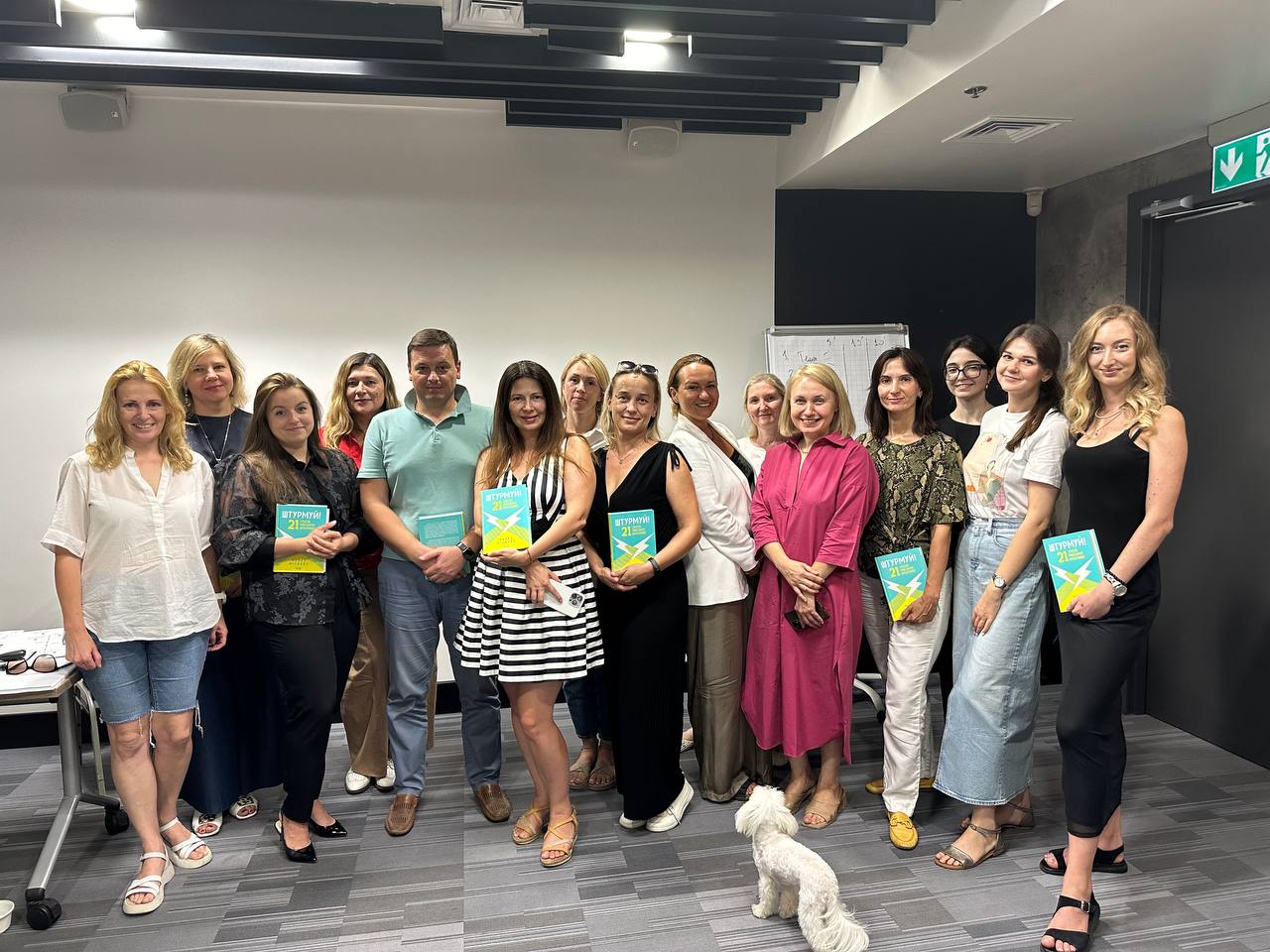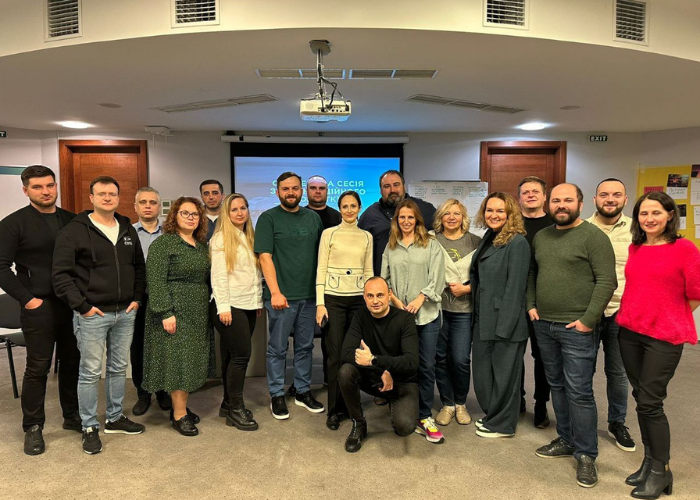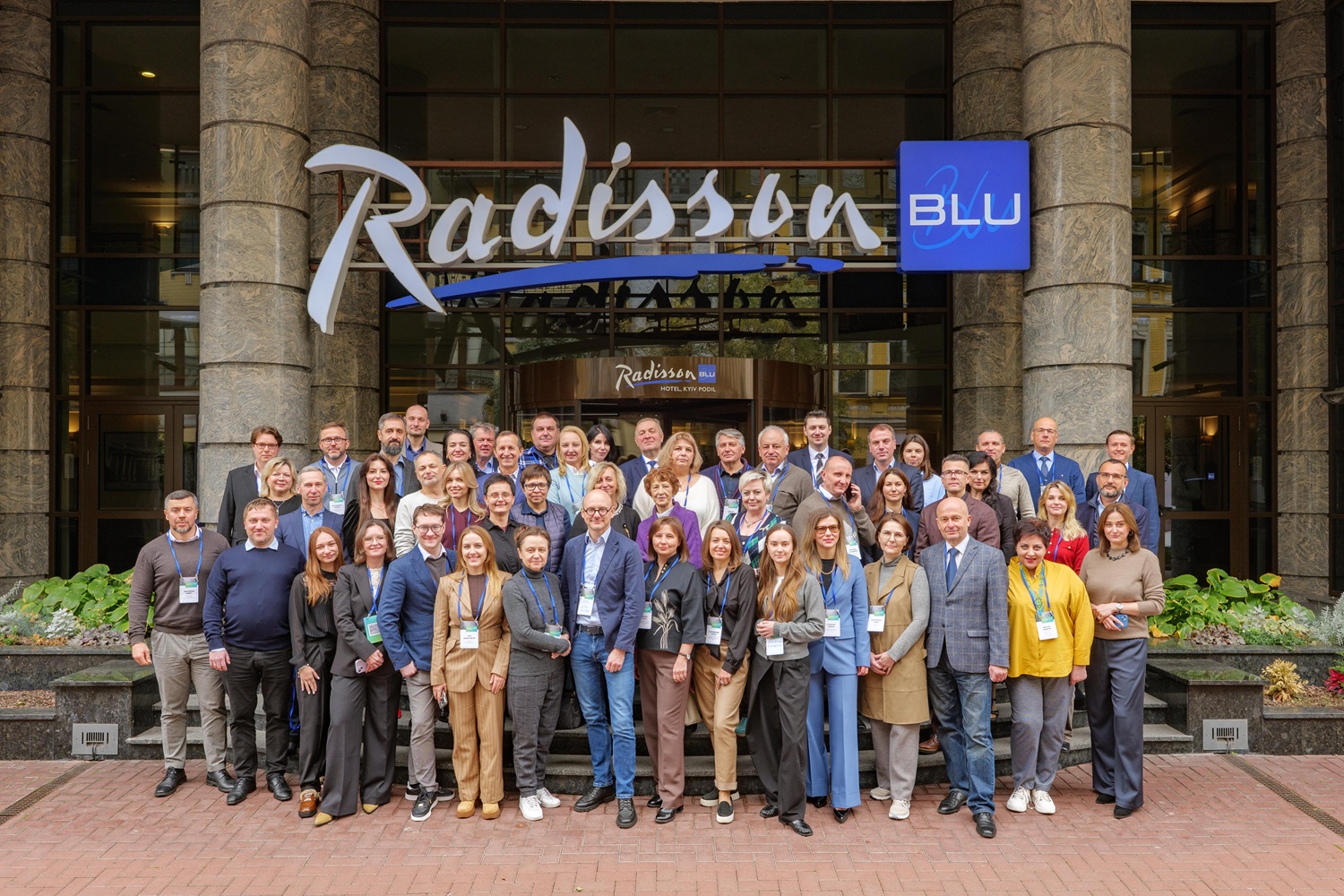On August 28, a meeting of participants in the “HR with Wings” program for HR professionals from the public sector took place. This time, the focus of the discussion was on employer branding. The event was organized by the EU4PAR project.
The speaker was Laura Hasai, a professional mentor for HRBP, HRG, and HRD in career development and profession-building.
Employer branding is the sum of a company’s reputation, values, and culture, which shapes its image as an employer. It defines how a company is perceived by potential and current employees and encompasses all aspects that affect their experience, from the hiring process to the work atmosphere, development opportunities, and overall corporate culture. A strong employer brand helps attract and retain talent, boost employee engagement, and create a positive work environment.
Laura Hasai discussed the motivations and goals of working with an employer brand, the metrics for a successful employer brand, Employee Value Proposition (EVP), and shared the methodology of Employee Journey Mapping (EJM).
The Employee Value Proposition (EVP) is a unique value offering to employees, reflecting what the company can provide in exchange for their work, skills, and loyalty. It is a combination of both material and intangible rewards, such as competitive salary, career opportunities, corporate culture, work-life balance, learning and development opportunities, as well as social and other benefits. A strong EVP helps companies attract, retain, and motivate talent, increasing engagement and job satisfaction.
There are six components of EVP:
- Company (popularity and visibility in the labor market)
- Compensation (system of salary, benefits, and bonuses)
- Development (training and growth opportunities)
- Team (management style and relationships)
- Job content (scale, tasks, clients)
- Working conditions (technological safety, location, remote work)
Participants also learned about Employee Journey Mapping (EJM) – a method for mapping employee experience, used to analyze and improve employee interactions with the organization at all stages of their career. It involves creating a visual map reflecting the entire journey an employee goes through in the organization, from hiring and onboarding to retirement or resignation. This mapping helps identify key interaction points, pain areas, and opportunities for enhancing the employee experience, leading to improved engagement, job satisfaction, and lower turnover.
“The main value proposition of the state as an employer is the sense of purpose, the feeling of involvement in important matters. Currently, Ukraine cannot compete with the private sector in terms of salary, but it is the employer capable of attracting and uniting professionals to rebuild the country. Many people are already actively working in this direction, and I am confident that this is the future,” said Laura Hasai.
The state should consider adapting cooperation formats, as the current approaches are not always flexible enough. Globally, key specialists no longer want to work full-time on a single project. Another important trend is human capital. Previously, businesses were focused mainly on external clients, but now more attention is being given to internal clients – employees. Modern projects and strategies aim to turn employees into brand advocates, carriers of its products and services. The state could also invest more in employee development, which would significantly support their motivation and loyalty.”
Participants shared their impressions of the “HR with Wings” meetings:
Bohdana Yaremchuk, HRD of the Ukrainian Infrastructure Restoration and Development Agency: “Being surrounded by people with whom I can interact and exchange experiences is incredibly inspiring. My extensive experience not only allows me to gain new knowledge but also to share it with others. The team I have joined is in a transformational period. I am building HR processes from scratch, which gives me the opportunity to apply my knowledge and acquire new skills to make the right management decisions and shape the agency’s history. We have already worked on the HR strategy, and the steps we’ve taken so far are supplemented by what I am learning in this course.”
Angelina Nedoshytko, HR of the Restoration Agency: “I participate in this project because I want to develop my skills and knowledge in HR management. My goal is to transform the experience gained to create a better atmosphere in our agency. The most valuable aspect here is the people. Communicating with them, we get new ideas and knowledge. I realize the importance of developing internal branding. Today we discussed veterans’ policy, and I understand that this is a very relevant topic that we plan to implement in our work.”





